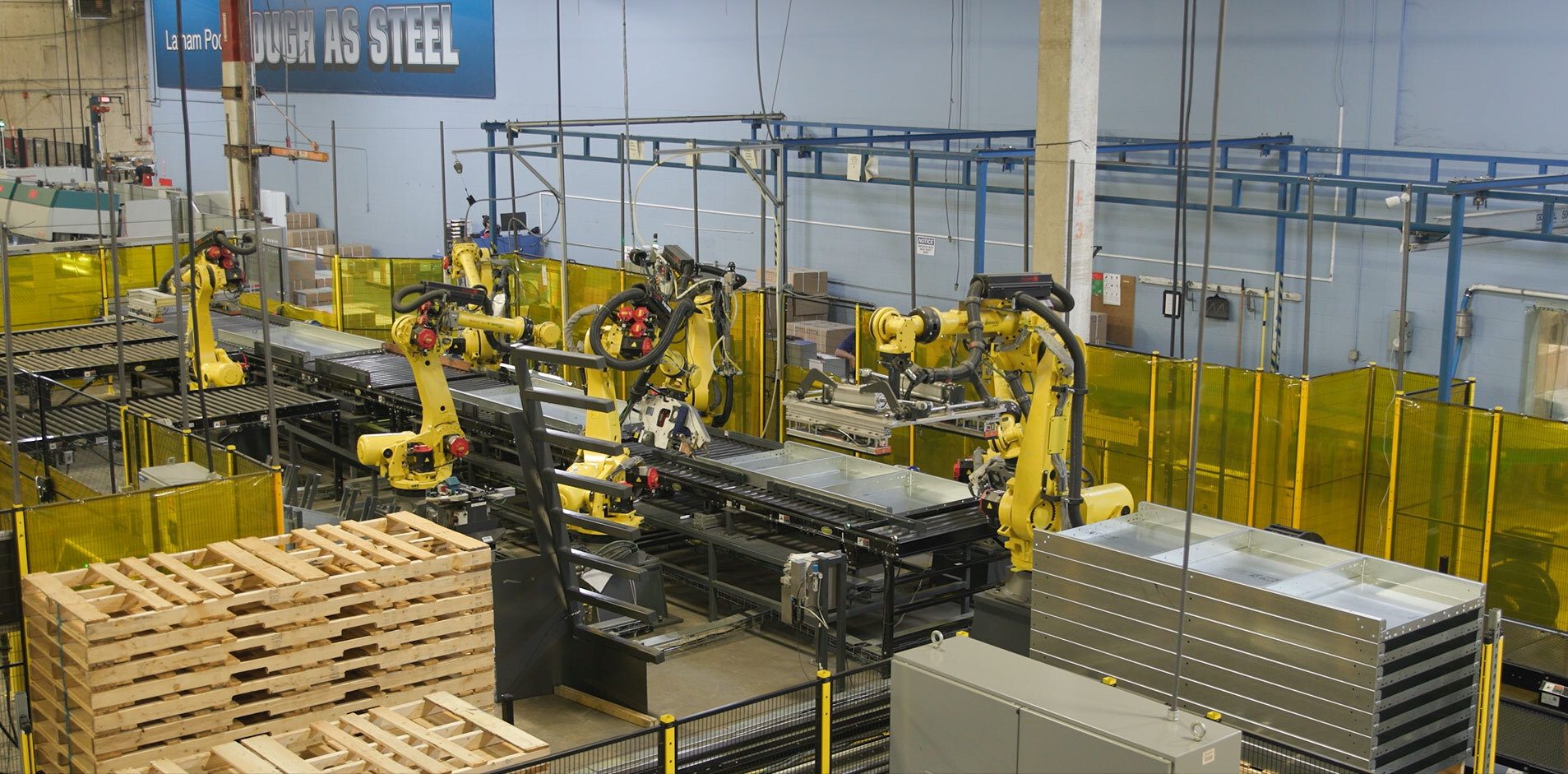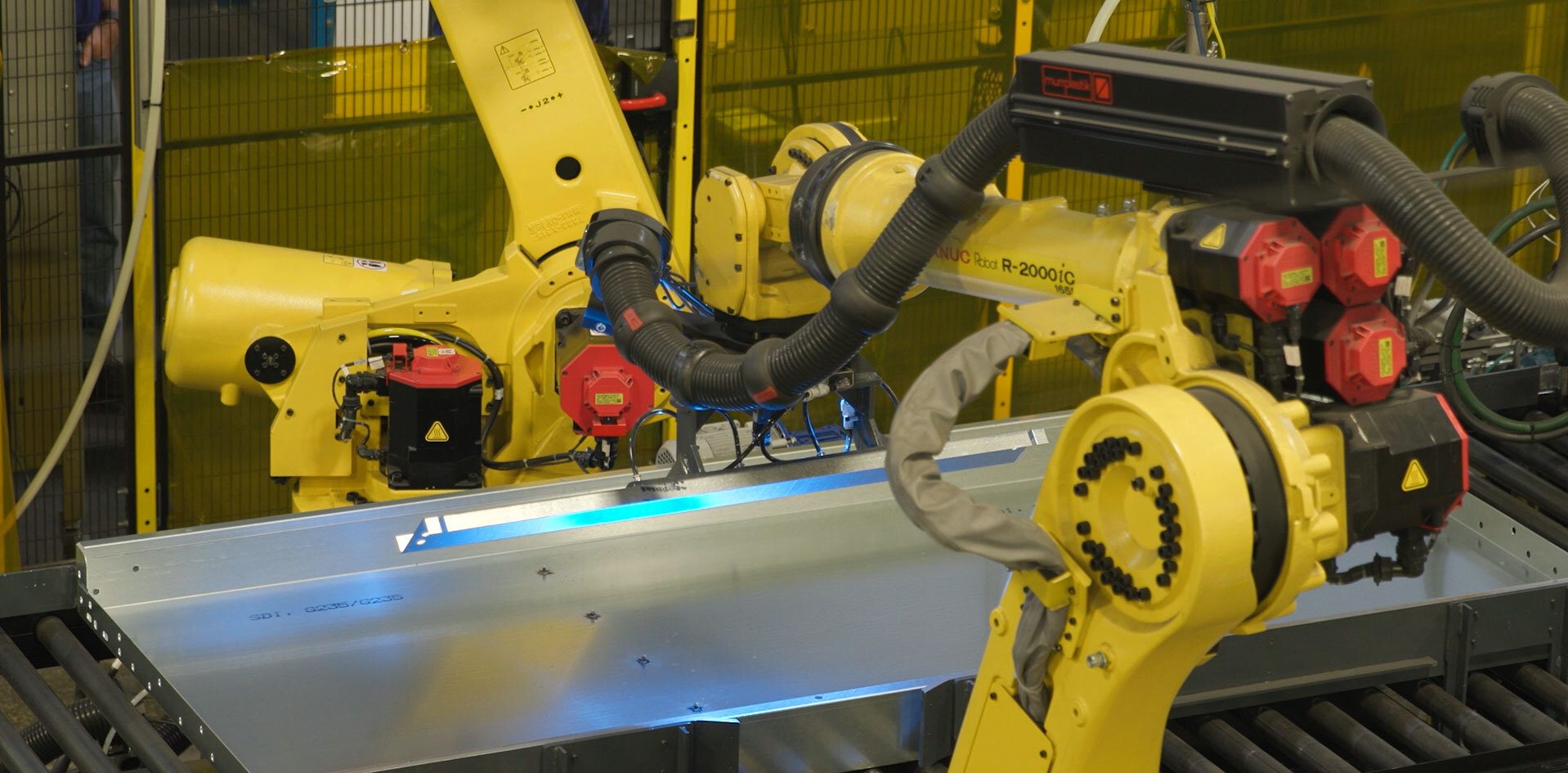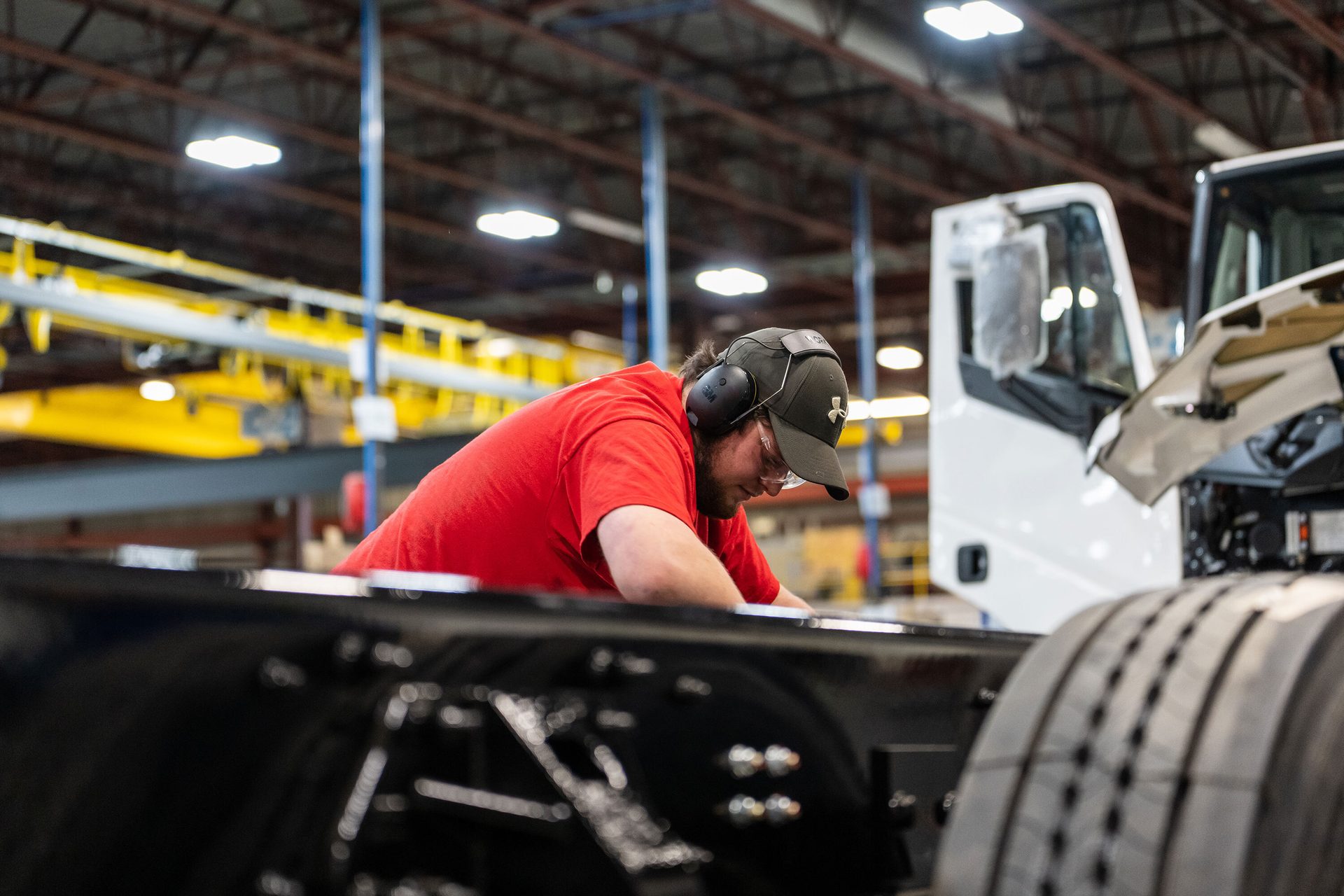Automated Assembly
Labor shortages are driving new demand for automation.
Options for Screwfeeding
Latham Pool’s automated assembly line uses six FANUC R-2000iC/165F robots and one FANUC R-2000iC/210F robot. Photo courtesy FANUC America
Robotic assembly of steel pool panels helps Latham Pools control costs
and labor challenges
Pool Manufacturer
Dives into Automation
Debra Schug // Communications Manager // FANUC America Corp. // Rochester Hills, MI
Latham Pools is the largest manufacturer of in-ground residential swimming pools in North America, Australia and New Zealand. The company manufactures pool components, including vinyl pool liners, steel bracing systems and steel steps, at a factory in Fort Wayne, IN.
Recently, the company was looking to create a new assembly line for its steel wall pool panels.
“These panels are used for the structural systems of in-ground pools,” says Matt Geyman, plant manager at Latham Pool. “So, those parts must be perfect every time.”
The company wanted a state-of-the-art assembly system that would solve some operational challenges and sustain its business now and into the future. Even though the facility had not implemented robotics before, management believed that technology should be a key component of the line.
“We’d been facing a staffing shortage while struggling to keep up with increased market demand,” says Bill Wentz, manufacturing engineering manager at Latham Pool. “We wanted to really capitalize on the fact that we were starting from a blank slate, and robotics was the appropriate solution.”

The assembly line consists of different stations where each robot performs a specific task. Photo courtesy FANUC America
Robotic Assembly
In 2023, Latham Pool contacted FANUC authorized system integrator KC Robotics about integrating a robotic pool panel assembly line. The company installed six FANUC R-2000iC/165F robots and one FANUC R-2000iC/210F robot to create an end-to-end automated assembly line.
“In the initial discussions, we reviewed the welding process,” says Kyle Carrier, CEO of KC Robotics. “We went through the automation with them and helped test the applications, specifically with spot welding.”
The production line consists of different stations where each six-axis robot performs a specific task. All FANUC robots are in the R-2000iC family line, but with different options on each; a specification made to keep commonality between the robots in the system.

At this station, one robot places a structural rib over threaded studs, while another robot uses a nut-driving system to secure it. Photo courtesy FANUC America
Inspection System
“The FANUC robots’ ease of programing and motion reliability help accommodate this type of application that has a large variation and product sizes,” Carrier says.
The first robot performs an inspection application using FANUC vision. Initially, the robot takes a picture to verify the length of various parts.
“On this line, we can have lengths varying from 18 to 120 inches, so that’s very important,” says Zak Abner, senior controls engineer at KC Robotics. “The widths are set to a 42 or 48 inches, so the length and the width are verified with the first robot.”
The second robot performs a stud welding application. The robot places five threaded studs in a row, with up to four rows on a panel. The panel then moves down the line to reach a second station with two robots, one of which performs a pick-and-place operation to place a structural rib over the threaded studs and the other robot uses a nut driving system to attach the rib.
“The fifth and sixth robot are both spot welding robots that utilize the spot tool from FANUC,” says Carrier. “And the seventh robot is a palletizing robot with a seventh axis for increased range.”
Robotic Assembly Line Benefits
The new assembly line has created an efficient, less labor-reliant system for Latham. Additionally, the system has freed up employees to do other tasks.
“The robots have helped us take employees and move them on to other production jobs, such as press operator and CNC or PLC operator,” says Geyman. “In fact, the robotic line has created new jobs for us. We have robot operators and control technicians now that we didn’t have before.”
The company has also seen improvements in production of the panels.
“The quality is really exceptional in our finished product,” says Wentz. “The seamless integration of the FANUC robots with the weld controller provide us with in-process adaptive feedback on the weld resistance level to allow for dynamic weld adjustments to maintain 100 percent quality control on all of our spot welds.”
As for the company’s first foray into robotic automation, Wentz says the experience has been fantastic, particularly the service and training from FANUC.
“With the success of this automation project, it’s really opened our eyes to what the possibilities are for future automation processes,” says Wentz.
ASSEMBLY ONLINE
For more information on robotics instructions, visit www.assemblymag.com to read these articles:







